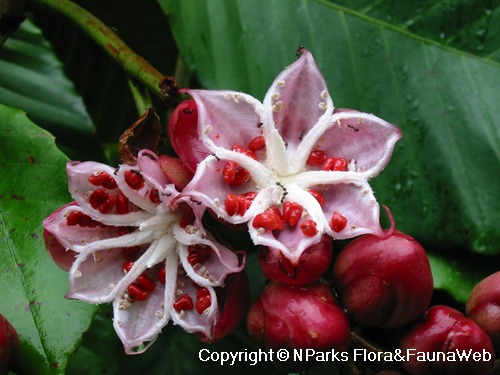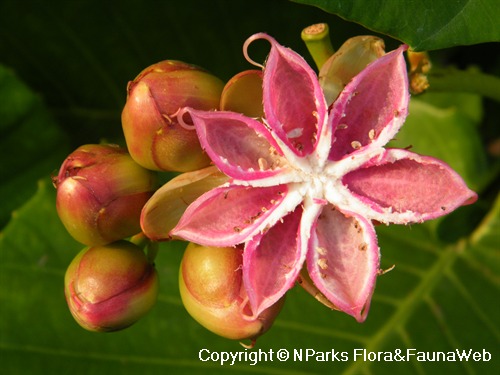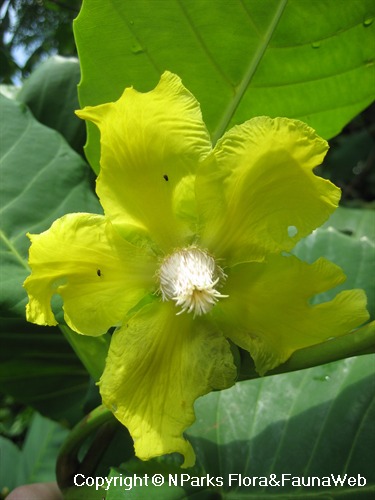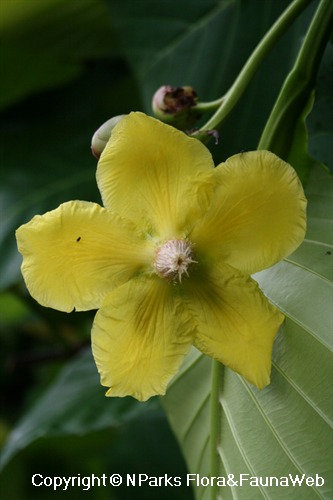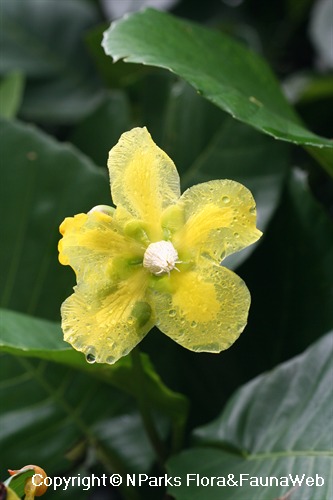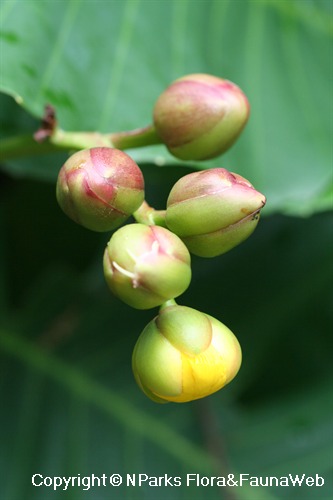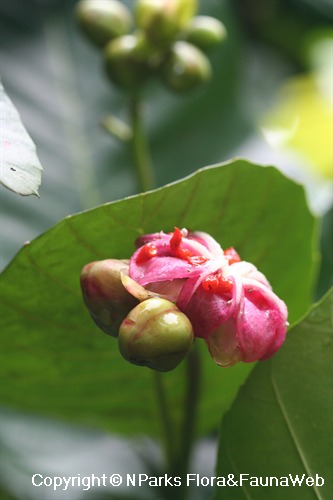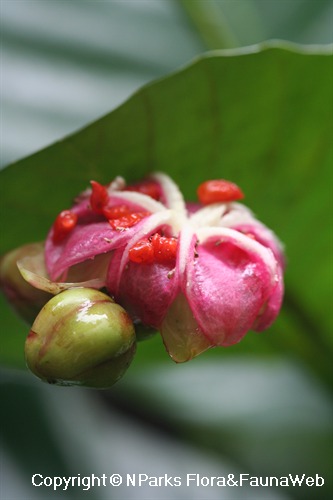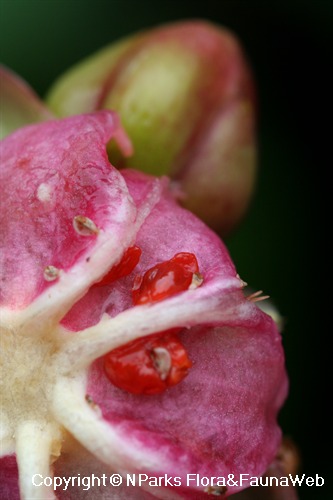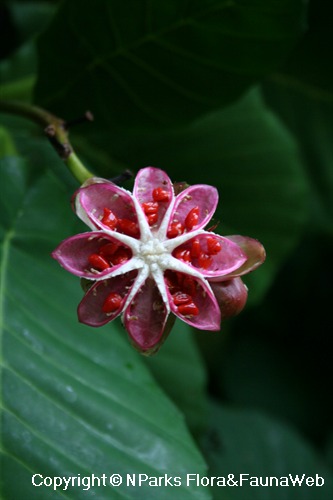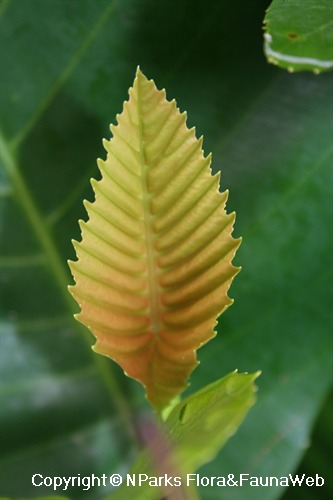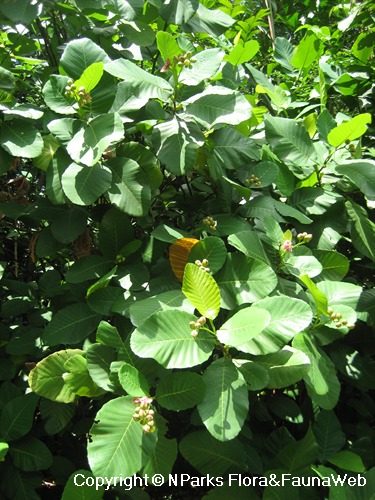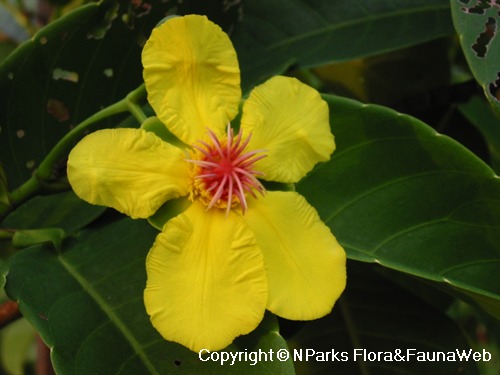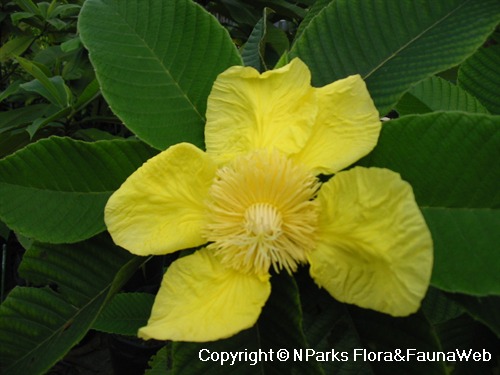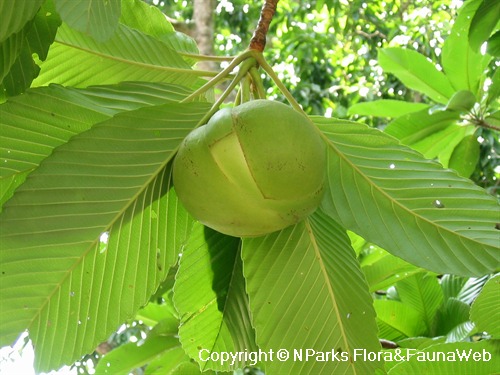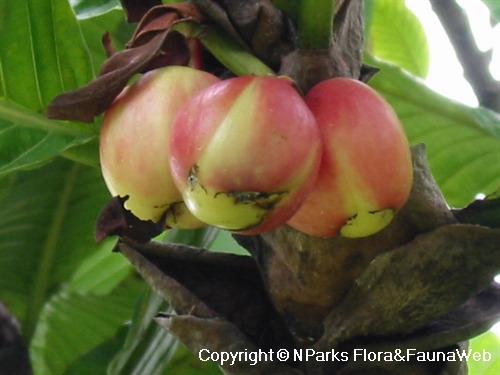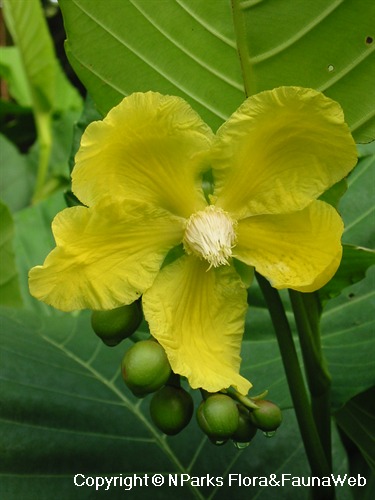
Back
Dillenia suffruticosa (Griff. ex Hook.f. & Thomson) Martelli
| Family Name: | Dilleniaceae |
| Synonyms: | |
| Common Name: | Simpoh Air, Simpuh Air, Shrubby Simpoh, Simpoh Ayer, White Simpoh, Yellow Simpoh |
Name
Classifications and Characteristics
| Plant Division | Angiosperms (Flowering Seed Plants) (Dicotyledon) |
|---|---|
| Plant Growth Form | Shrub |
| Lifespan (in Singapore) | Perennial |
| Mode of Nutrition | Autotrophic |
| Plant Shape | Irregular |
| Maximum Height | 2 m to 10 m |
Biogeography
| Native Distribution | Southeast Asia |
|---|---|
| Local Conservation Status | Native to Singapore (Least Concern (LC)) |
Description and Ethnobotany
| Growth Form | A large shrub, growing up to 7 m tall, often forming thickets. |
|---|---|
| Foliage | Its alternate, stalked leaves have leaf blades that are 12.5-38 by 6.5-25.5 cm, with prominent, parallel secondary veins. |
| Flowers | Its large flowers are 8-13 cm wide, with 5 bright yellow petals that are 4-5 by 2.5-3 cm each. Flowers last for a day. |
| Fruit | Its fruit splits open into a star when it ripens to reveal up to four seeds that are covered by a fleshy red aril. |
| Others - Plant Morphology | The Simpoh Ayer has very deep taproots to reach underground water sources. Therefore their presence sometimes suggests an available underground water source. The timber is not very useful as it is hard to work with and twisted. It provides food and shelter for other plants and creatures and is among the few plants that can germinate and grow on white sands. As a pioneer species, it provides shade for other less hardy plants to establish themselves. |
| Habitat | It grows along forest edges, streams, and in marshes, secondary forests, and swampy grounds, up to 500 m altitude. In Singapore, it is one of the key species found in adinandra belukar (secondary forest on degraded soil) and other secondary forests. |
| Associated Fauna | It provides food and shelter for other plants and creatures, such as the Yellow-vented bulbul and is among the few plants that can germinate and grow on white sands. As a pioneer species, it provides shade for other less hardy plants to establish themselves. Its flowers are pollinated by the carpenter bee (Xylocopa sp.). |
| Cultivation | It can be grown from seed or stem cutting. |
| Ethnobotanical Uses | Edible Plant Parts : Edible Leaves Food (Fruit or Vegetable): Its young shoots and leaves are edible. Others: The large leaves are also used to wrap food such as tempeh, or formed into shallow cones to contain traditional ‘fast food’ such as rojak. |
Landscaping Features
| Landscaping | It is suitable for planting along streetscapes, parks and gardens for its large showy flowers, and fruits that attract birds. |
|---|---|
| Desirable Plant Features | Ornamental Flowers, Ornamental Foliage |
| Landscape Uses | General, Suitable for Roadsides, Parks & Gardens, Small Gardens, Hedge / Screening, Riverine, Marsh / Bog, Reforestation |
Fauna, Pollination and Dispersal
| Fauna Pollination Dispersal Associated Fauna | Bird-Attracting (Hiding / Nesting Place, Fruits), Bee-Attracting |
|---|---|
| Pollination Method(s) | Biotic (Fauna) |
| Seed or Spore Dispersal | Biotic (Fauna) |
Plant Care and Propagation
| Light Preference | Full Sun |
|---|---|
| Water Preference | Lots of Water, Moderate Water |
| Plant Growth Rate | Moderate |
| Rootzone Tolerance | Moist Soils, Waterlogged Soils (Drains Site), Easy to Grow |
| Propagation Method | Seed, Stem Cutting |
Foliar
| Foliage Retention | Evergreen |
|---|---|
| Mature Foliage Colour(s) | Green |
| Mature Foliage Texture(s) | Leathery |
| Foliar Type | Simple / Unifoliate |
| Foliar Arrangement Along Stem | Alternate |
| Foliar Attachment to Stem | Petiolate |
| Foliar Shape(s) | Non-Palm Foliage |
| Foliar Venation | Pinnate / Net |
| Foliar Margin | Serrate / Toothed |
| Leaf Area Index (LAI) for Green Plot Ratio | 3.0 (Tree - Intermediate Canopy) |
Floral (Angiosperm)
| Flower & Plant Sexuality | Bisexual Flowers |
| Flower Colour(s) | Yellow / Golden |
|---|---|
| Flower Grouping | Cluster / Inflorescence |
Fruit, Seed and Spore
| Mature Fruit Colour(s) | White, Red, Pink |
|---|---|
| Fruit Classification | Aggregate Fruit (Syncarp) |
Image Repository
Others
| Master ID | 1554 |
|---|---|
| Species ID | 2847 |
| Flora Disclaimer | The information in this website has been compiled from reliable sources, such as reference works on medicinal plants. It is not a substitute for medical advice or treatment and NParks does not purport to provide any medical advice. Readers should always consult his/her physician before using or consuming a plant for medicinal purposes. |

